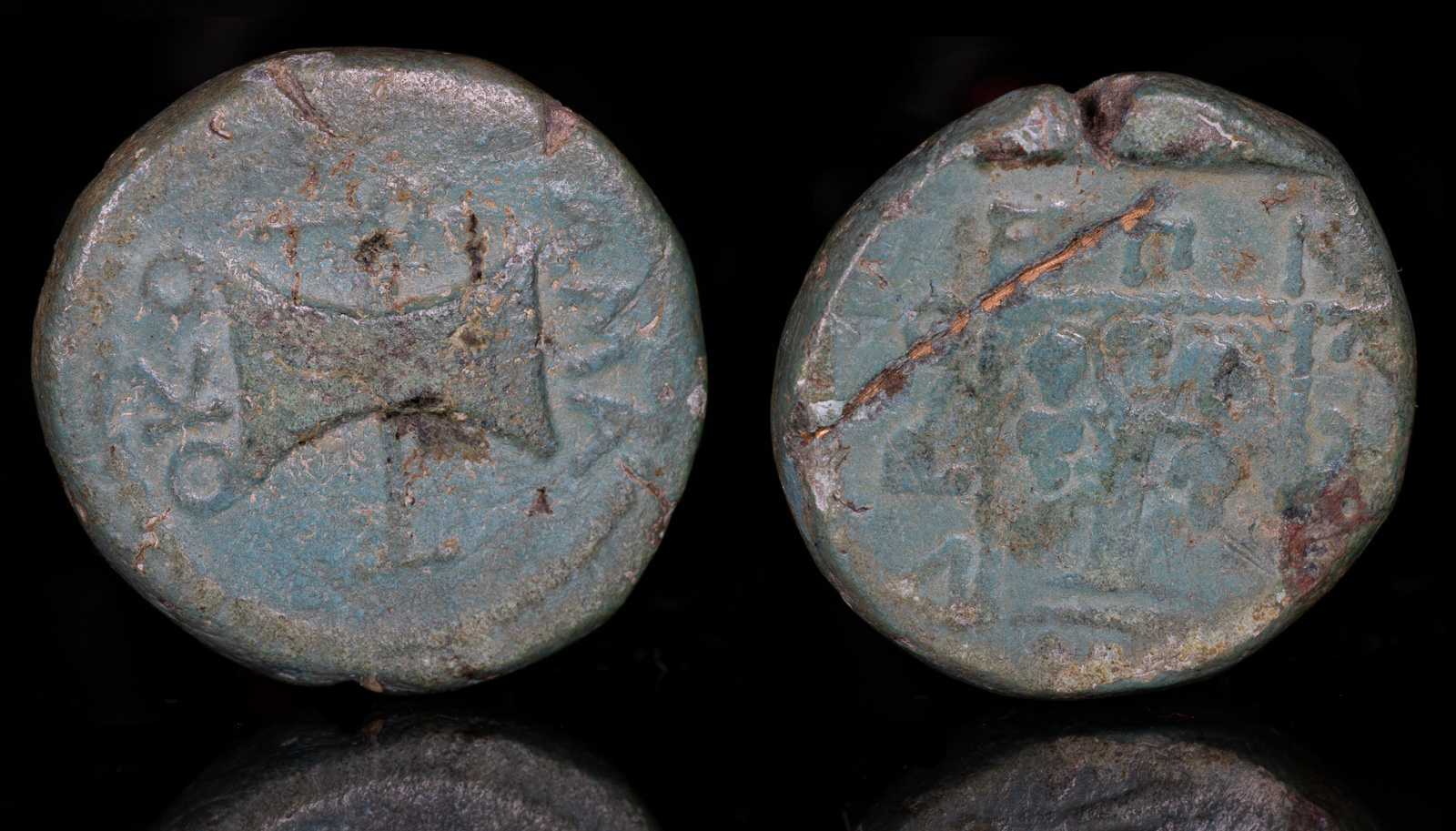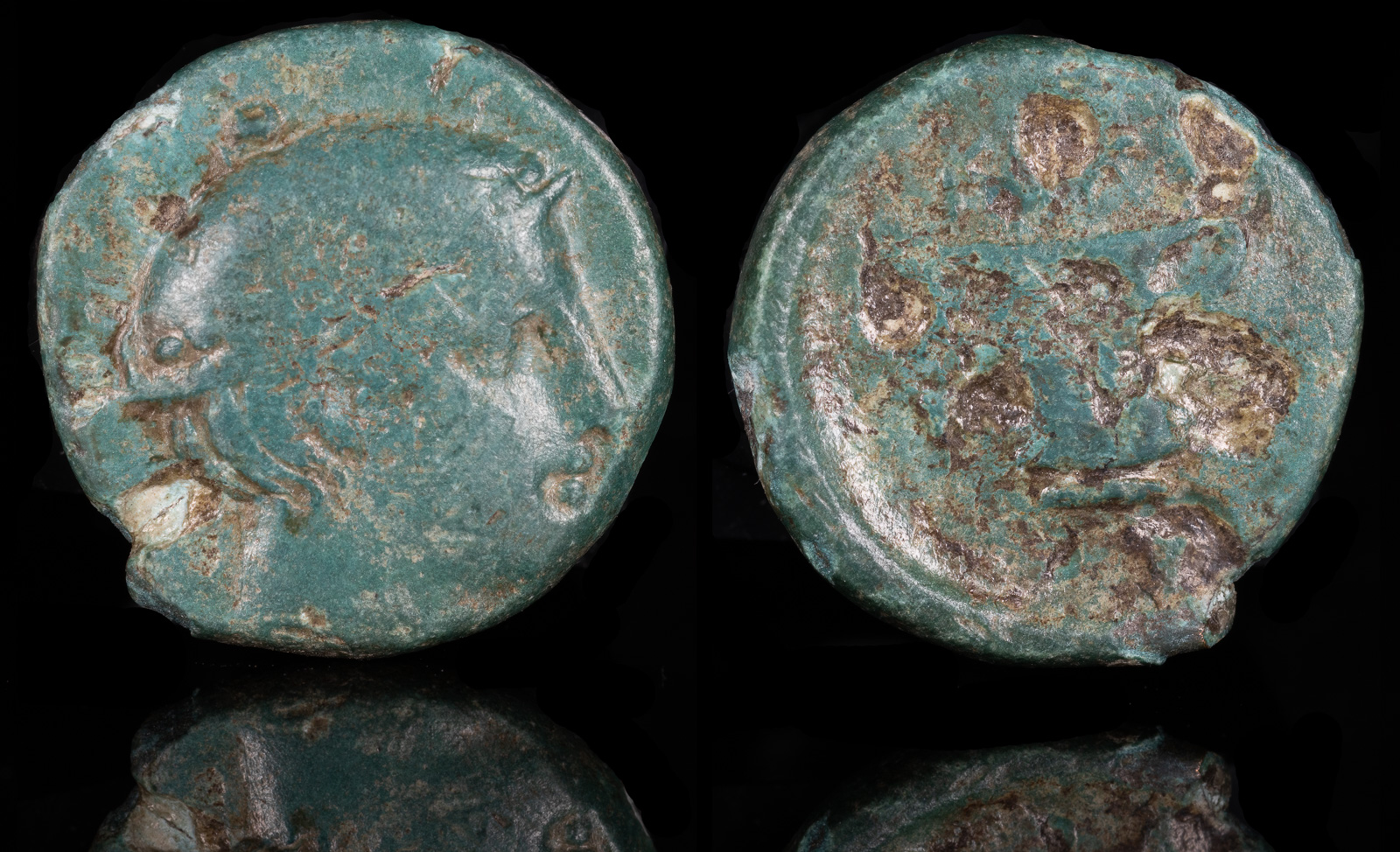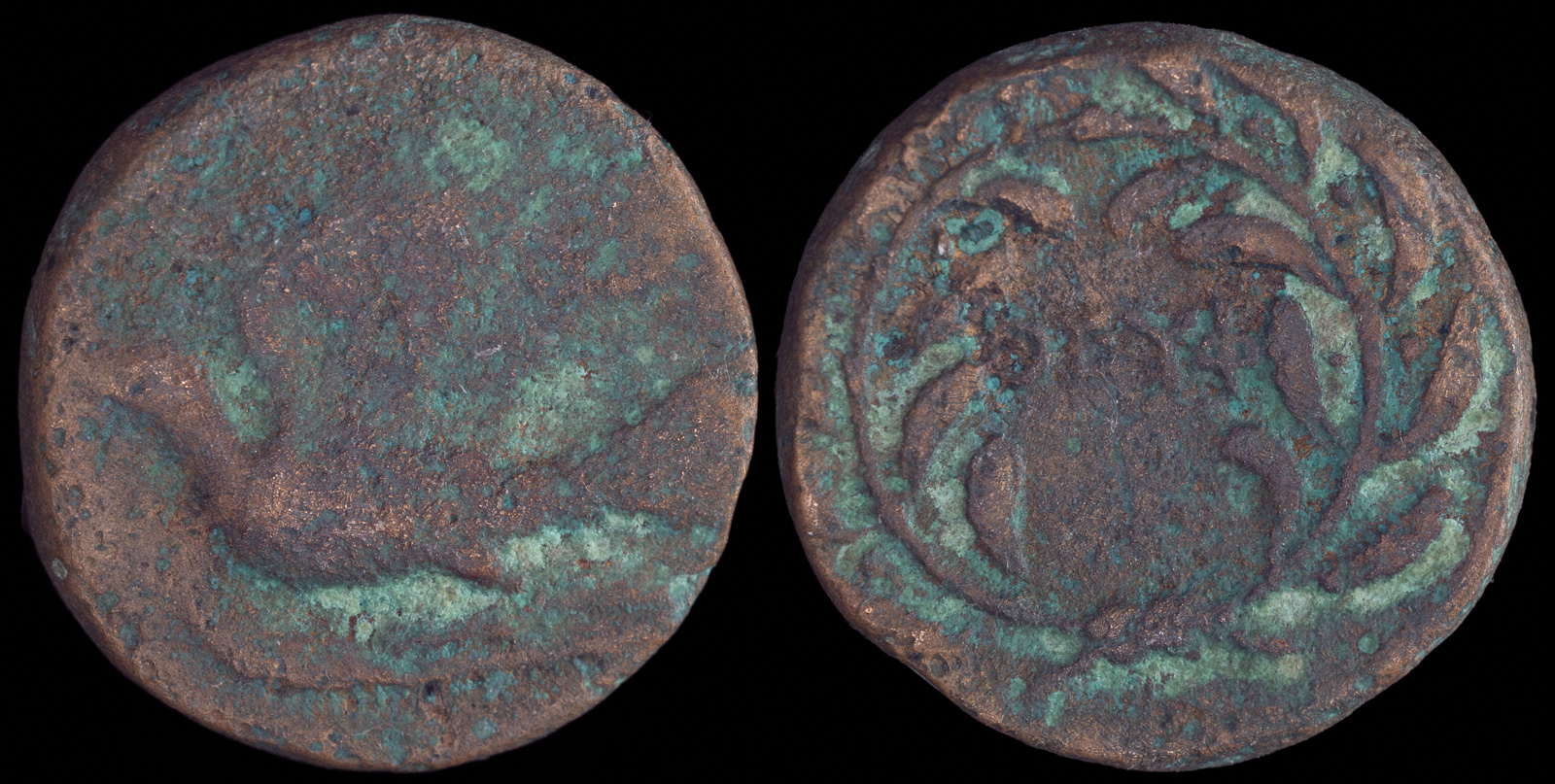Blue
View All Tags
The characteristic blue or greenish-blue color seen on some ancient coins is typically caused by the formation of copper salts, such as copper carbonate or copper chloride. These compounds develop when copper reacts with substances in the environment, such as carbon dioxide, chlorides, and sulfides present in the air or soil. For example, when copper is exposed to moisture and carbon dioxide over long periods of time, it can form copper carbonate (CuCO₃), which has a blue or greenish hue. The presence of salts from seawater or salty soil can also lead to the formation of copper chloride (CuCl₂), contributing to the bluish color.
Another factor that can contribute to the blue patina is the presence of copper sulfate (CuSO₄), which can form in environments where sulfur compounds are present, such as in damp or acidic conditions. Sulfur from polluted air or decaying organic matter can react with the copper in the coins, producing blue copper sulfate crystals on the surface of the coin. This blue color is typically seen on coins buried in environments rich in sulfur, such as near marshy areas or saltwater locations.

Amatokos II
King of Thrace 359-351 BCE
struck under the magistrate Kleandros
AE 14.55g 19.46mm
AMA-T-OKO Labrys with the handle forming the T of the legend; above, kerykeion to right.
Rev. EΠI KΛE[AN]ΔΡΟ Grape arbor within linear square border.
Topalov 2003, 105 (S. 244) Kratzer auf Rv. Peter p. 135, 1
Ex Münzen & Medaillen GmbH

Kings of Thrace. Kotys I.
13.49mm, 1.89g 383-359 BCE
Obverse: Wreathed head of Cybele right (ours looks like Mercury?)
Reverse: Diota (Two-handled cup)
HGC 3.2, 1700

Sikyonia, Sikyon
330-305 BCE
AE 16mm, 3.95g
Obverse: Dove flying
Reverse: Legend in wreath
BCD.307.1 Warren.1998.89